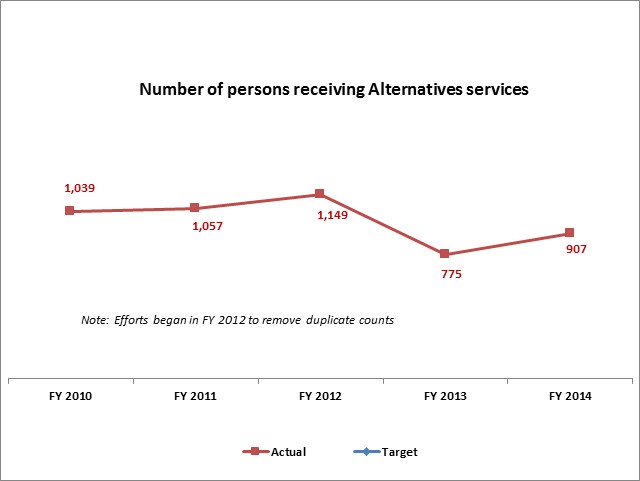This program makes available a wide variety of services including in-home services, personal care, home health aides, respite, day care, and transportation. Clients must meet income and eligibility guidelines to receive services and fees are assessed based on ability to pay.
During the 2015 General Session, the Legislature appropriated for Fiscal Year 2016, $3,974,100 from all sources for Aging Alternatives. This is a 0.1 percent increase from Fiscal Year 2015 revised estimated amounts from all sources. The total includes $2,924,400 from the General/Education Funds, an increase of 0.1 percent from revised Fiscal Year 2015 estimates.
For the most recent completed fiscal year, the following information represents the purposes for which the money was used:

The Aging Alternatives program is offered statewide and is administred through the 12 area agencies on aging for the following counties: Box Elder; Cache; Rch, Davis; Beaver;Garfield; Iron; Kane;; Washington; Summit; Utah; Wasatch; Salt lake; San Juan; Juab; Millard; Piute; Sanpete; Sevier; Wayne; Carbon; Emery; Grand; Tooele; Duchesne; Uintah ; Morgan; Weber. Distribution is "based on the federal poverty level of 100%; population; demographics, geographic area, race/ethnicity and frailty (ADLs and IADLs)." UCA 62A-3-108 establishes criteria and also governs the distribution of these funds.

Regarding the negative trend greater than 5% in the number of persons receiving services from the Aging Alternatives program performance measures, the agency states, "The negative trend in reported number of persons receiving alternatives services is due to a recent discovery of duplication of participants by some AAAs. The state has since gone back and adjusted those numbers based on an unduplicated count."
COBI contains unaudited data as presented to the Legislature by state agencies at the time of publication. For audited financial data see the State of Utah's Comprehensive Annual Financial Reports.